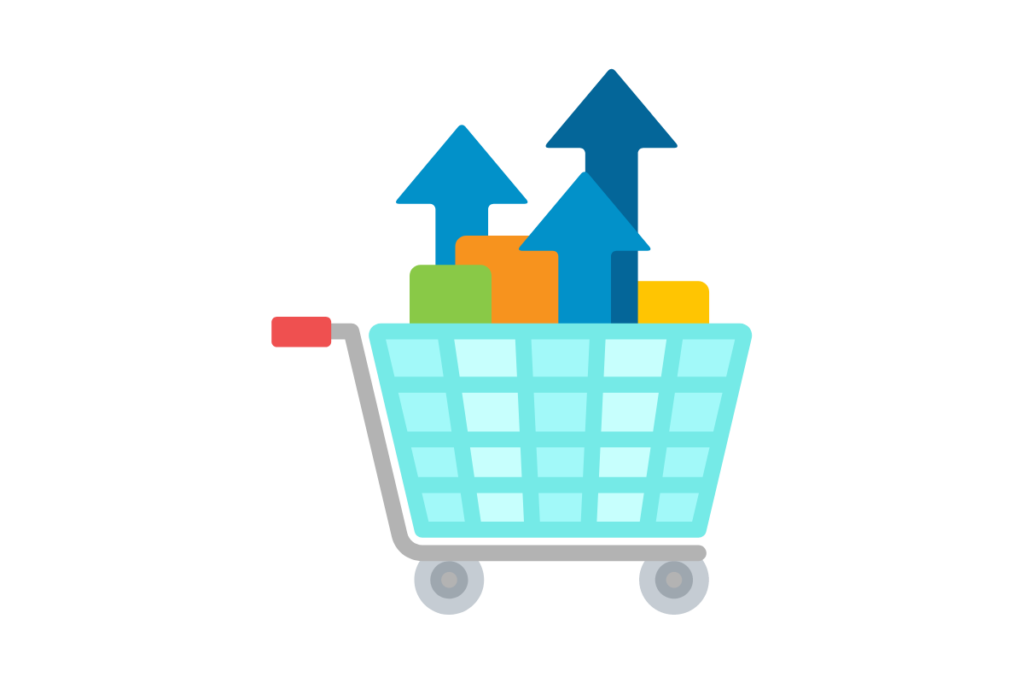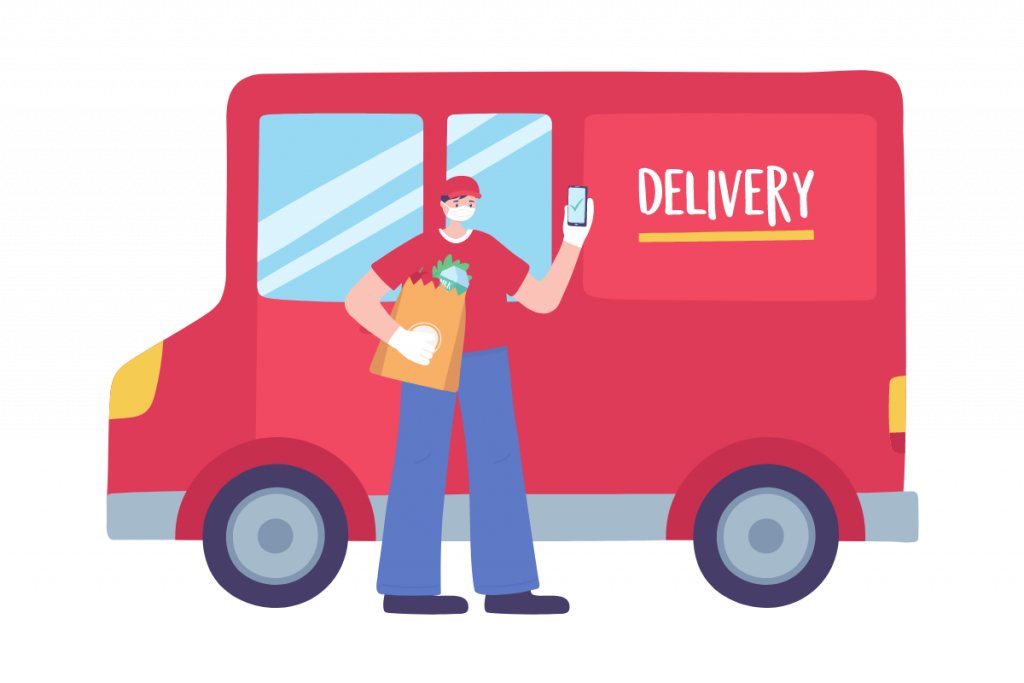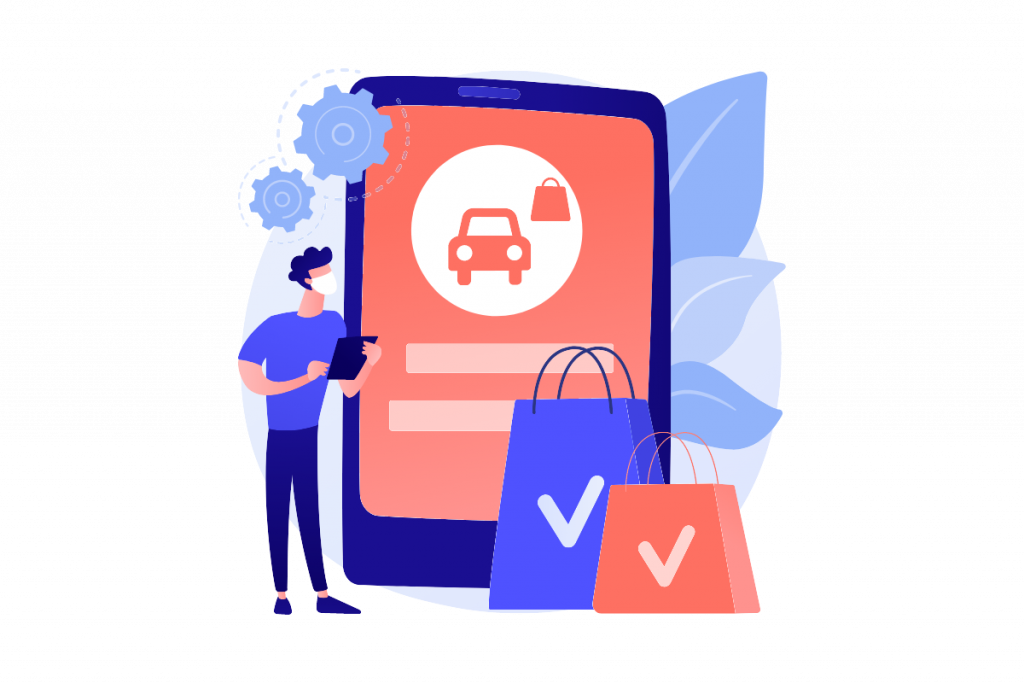How The Pandemic Affected Retail & Delivery
In the present circumstances (due to the pandemic, of course) trends around the retail and delivery landscape has gone through massive changes across the globe.
Physical stores have shut down, there have been disruptions throughout the supply chain, and businesses are left to deal with this mess.
On the other hand, the pandemic has also brought a paradigm shift in the way of eCommerce around the world.
eCommerce retail sales have increased in the 1st quarter of 2021 following last year and don’t seem to be slowing down anytime soon.
These trends have turned out to be so effective even in a restored normal version of the planet (if there ever was such a thing). Therefore, business owners can expect them to be followed in a post-pandemic world as well.
Retail & Delivery Trends That Are Here to Stay
The how and where of retail shopping is changing at breakneck speed.
Shopping behavior has changed so rapidly that a huge number of companies are caught unaware.
Trends that have been in their forecast materialized throughout the decade have accelerated beyond recognition.
Let’s look at such trends that are here to stay in detail.
Online Shopping

Online sales are not an alternative, but a need for brick-and-mortar businesses.
While people have been buying from online stores for a long time – on the customer side, the pandemic is responsible for a massive spike in the need for eCommerce, which is here to stay for decades to come.
Several brand new platforms gained importance in emerging markets by developing business models and also assisting the general landscape to be much more competitive by nature.
And also the pandemic may open possibilities for second-generation “niche” eCommerce sites that work in certain industry segments which are usually excluded from large eCommerce platforms.
For instance, baskets of various vegetables and fruits are now in demand as customers look for businesses that can deliver fresh produce to their doorstep.
Livestream Selling

Using video to boost sales is a tried and evaluated technique for brands and retailers.
The application of footage to push sales started with TV shopping channels like HSN and QVC, which showed items in a live broadcast. This method also invited audience participants to gain the product and put an order.
The pandemic and social distancing norms have now given customers a new way to discover and purchase goods from the comfort of their own homes without risking their safety.
Last November, reality star Kim Kardashian appeared on a live marketing stream and sold 15,000 bottles of perfume within minutes.
While major social media platforms such as Instagram, Twitter, and Facebook rolled out live marketing opportunities in May 2020, YouTube is preparing to come out with very similar features.
One particular thing is clear, lots of businesses are gearing up for the development of live selling.
Subscription-based Services

Instead of a one-time purchase of an item, a buyer subscribes to access a product or service over a length of time. This may be a subscription to services like Amazon and Netflix or a subscription to makeup brands.
The upside for the buyer may be the comfort of automatic payments and regular delivery, and also personalization. To the company, it implies a much better prediction of revenues, reliable customer data, and much better customer engagement.
The subscription-based model is theoretically meant to be great for the world, as we change from an ownership design to a sharing-based one, maximizing reducing waste and also resource efficiency.
Virtual Experiences

With the pandemic, any outside house tasks are temporarily closed, which leads to people searching for secure ways to continue their hobbies. Thus rose the popularity of virtual experiences through conferencing companies.
One business that exploded during the pandemic was Zoom where it held online classes, company meetings, yoga, and cooking classes.
And as people got creative, virtual experiences included live concerts, museum trips, and theme park visits.
Brands can tie up with these events or influencers and promote their product in relevant spaces.
For example, as a sports company, you can can sponsor a yoga retreat and market their goods to the attendants. There is a good chance that attendants who are trying something new will be intrigued and try out your products.
Same-day Delivery

The pandemic disrupted our way of accessing goods and with government-mandated lockdowns, the usual shopping patterns stopped abruptly with a sudden halt.
Many businesses have switched to altered activities as consumers looked to home delivery as a solution.
As the lockdowns extend further, consumers are now shopping more and more online, leading to further competition among major online retailers. This has further led to the popularity of same-day delivery services becoming a rising trend.
Customers too, looking for convenience in their order delivery, would decide to opt for brands that offer same-day delivery.
Curbside Pickup

Unlike us, who mostly work at home and feel safe, individuals who work in delivery services remain open and at risk. In the case of constant deliveries at multiple locations, there’s a chance of them getting infected.
Fortunately, curbside pickup enables the safety of both customers and employees. Curbside
Pickup lets consumers shop online and choose an available time slot where they can pick up their order with no face-to-face interaction with other individuals.
While this may look like an ideal way of shopping without risking safety, it can be a challenge for small retailers and even bigger businesses who never considered curbside pickup.
What complicates this is having a designated pickup area followed by the requirement to confirm which customer is picking up the order and ensuring the payment process is legitimate.
In the coming days, and maybe even after that, contactless and safe queuing is the deciding factor in client retention.
The Post Pandemic Retail & Delivery Landscape
With the current situation, we’ll see a continuous rise of electronic payments and the use of digital wallets allowing consumers to make safe and instant transactions.
The uncertainty of financial solutions such as secured electronic payments can be a vital risk for businesses, especially eCommerce platforms. With the segment evolving rapidly, it’s essential to have a coherent framework to use.
With the aforementioned trends likely to remain for a while until we all feel comfortable to step out, businesses can likely follow them to not get FOMO.
Even if you feel you are an SMB who cannot implement it all at once, you can look to test out some of the trends by implementing them one by one.

![[eCommerce 2021] A Step-by-step Guide to Customer Retention Blog Header](https://lswordpress.s3.amazonaws.com/blog/wp-content/uploads/2021/05/18094942/2-1-150x150.png)
